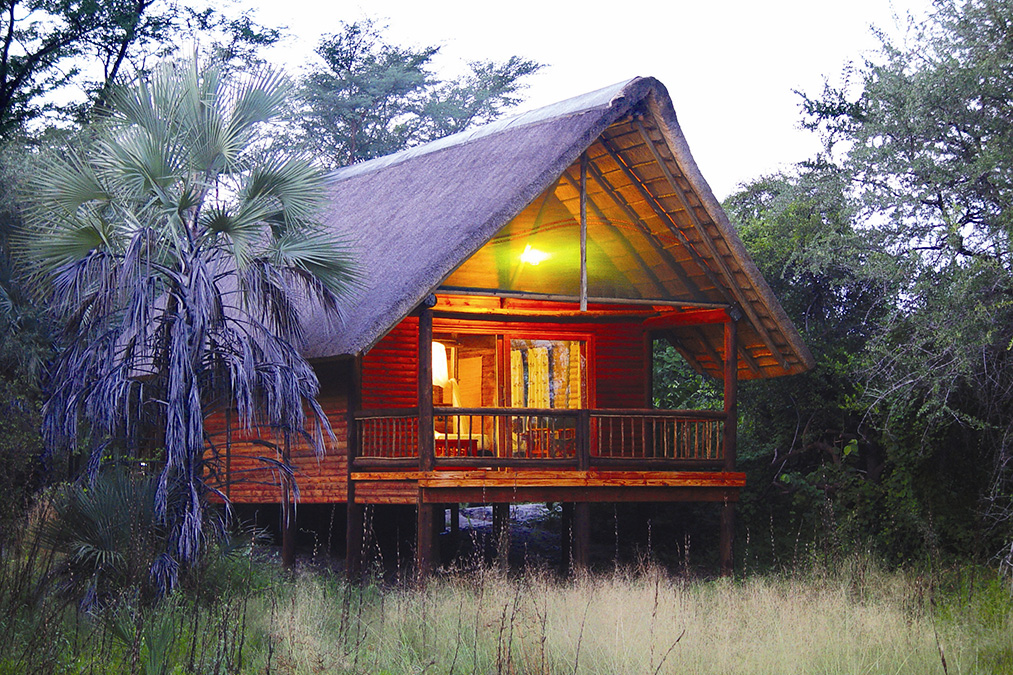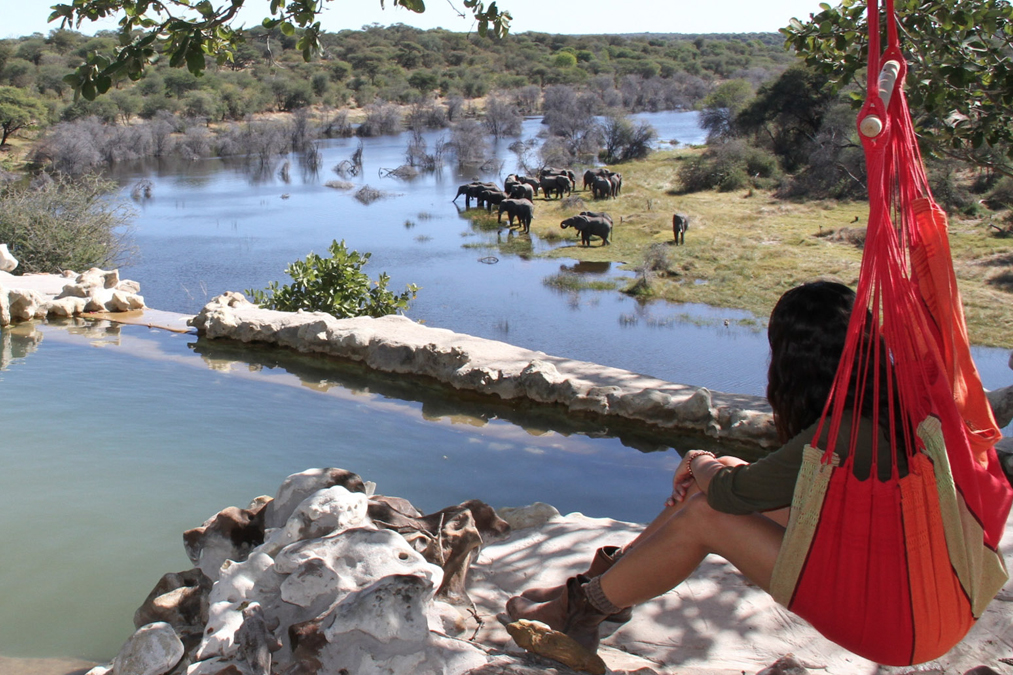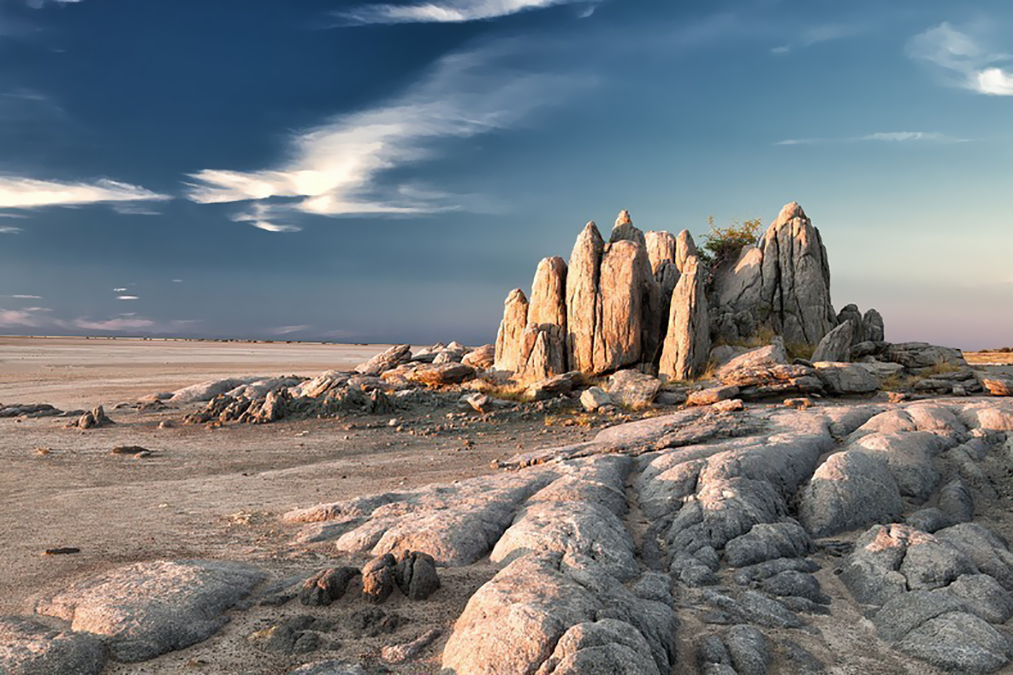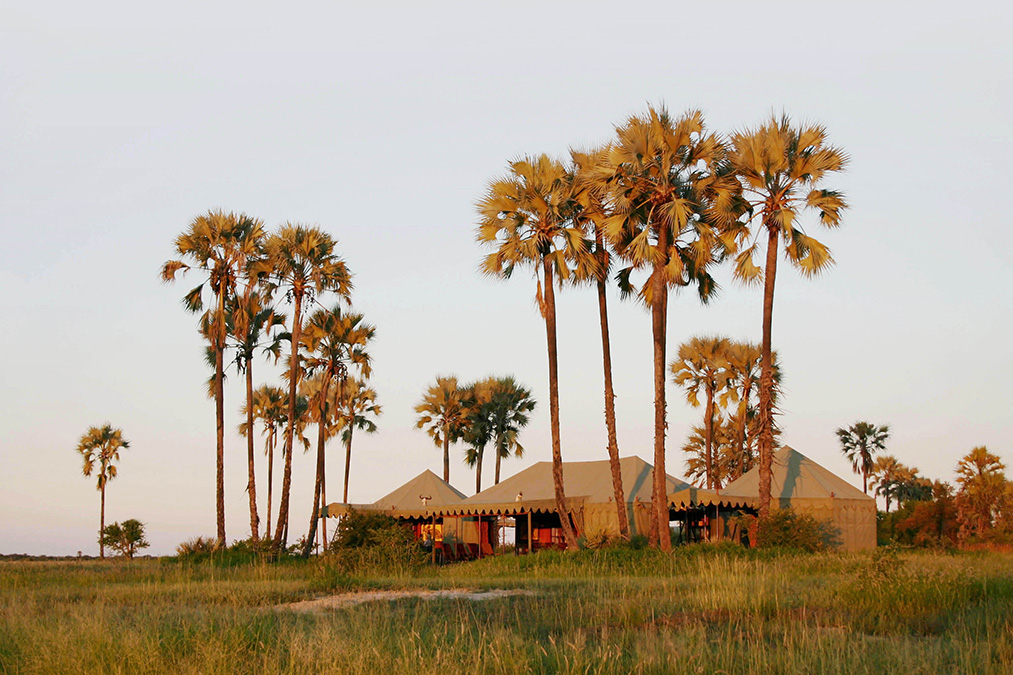

Although Nxai Pan was also once part of the great super lake, it is quite different in character to the Makgadikgadi Salt Pans. It consists of a series of grass covered fossil pans dotted with islands of umbrella acacia, supporting a good variety and density of game and birdlife. This is one of the few places that springbok and impala cohabit. In the drier months, the desert landscape is dry and harsh. Game viewing at the waterhole is excellent where you may observe lion, cheetah, spotted and brown hyena, zebra, giraffe, kudu, and hartebeest, bat eared fox, jackal and sometimes wild dog and elephant.
After the summer rains from December to April, the landscape changes: colours are bright and vivid as the dust is washed away and hundreds of wild flowers begin to appear and the bush turns a brilliant green. The pans are once again filled with large grazing herds and, as always, the predators are nearby and thrive in this time of plenty. An additional attraction in the area are Baines Baobabs, a cluster of Baobabs on the shores of Kudiakam Pan, a photographer’s paradise offering a visually stunning sight with the vast pans contrasting against the giant ancient trees.
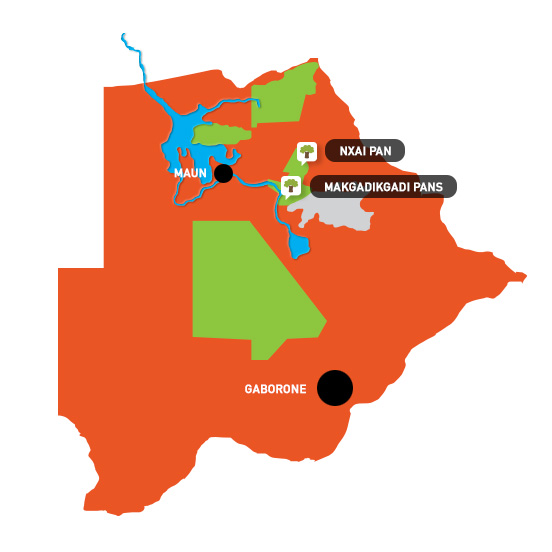
OUR CAMP SELECTIONS
NATA LODGE
GREAT VALUE
An oasis set among the Mokolwane palms on the edge of the pans. It is ideally situated close to the entrance to the Nata Sanctuary and is just off the main road, 10 km from Nata village. This is the gateway to the Okavango, Chobe and Francistown areas.
The Nata River delta feeds the Sua Pan in the Nata sanctuary and is the breeding ground for a host of water birds including pelicans and flamingo in their thousands, transforming the shore line into a pink haze blending into the western sky. Nata Lodge offers guided tours in open safari vehicles into the sanctuary, not to be missed.
MENO A KWENA
SOMETHING AUTHENTIC
Meno A Kwena, meaning “teeth of the crocodile”, borders Makgadikgadi Pans National Park in close proximity to Nxai Pan National Park. The camp is situated on tribal land and has been built on a cliff edge overlooking the Boteti River, which is now flowing again for the first time in almost 20 years.
This authentic safari camp is styled in the tradition of an East African tented camp. The tents are simple yet stylishly furnished with comfortable bedding and hanging space. Separate to each tent are private open-air bathrooms with a traditional bucket shower (filled with hot water for daily showers provided on guests’ request) and a flush toilet. Each tent features a private sitting area, which offers a beautiful view over the Boteti River. The Boteti river attracts many zebra and wildebeest herds during the dry season (June to Oct) offering excellent game viewing from the comfort of the camp.
Meno A Kwena’s informal atmosphere makes for a very relaxing stay after the hectic round of activities at many camps.
CAMP KALAHARI
FAMILY FRIENDLY
Camp Kalahari is a return to the traditional safari style of the old explorers and is the best way to experience the Makgadikgadi in a fresh and affordable way. It is the ideal camp for those who want fun, comfort, style and adventure. Camp Kalahari accepts children of all ages and makes for a fantastic family safari destination. The camp is nestled amongst the acacias and Mokolwane palms of Brown Hyena Island, on the edge of the Makgadikgadi salt pans, adjacent to the Makgadikgadi – Nxai Pans National Park.
Activities included at Camp Kalahari all year round are getting up close and personal with a visit to their resident family of habitual meerkats, walking with Zu/’hoasi Bushmen trackers for a glimpse into their ancient culture as they teach guests how they have survived in the vast area, game drives to experience unique desert wildlife and a visit to Chapman’s Baobab, campsite of Livingstone and Selous (one of the three largest and oldest trees in Africa).
KUBU ISLAND
ENCHANTING
Kubu Island is a dry granite rock island located in the Makgadikgadi Pans National Park area of Botswana. The name Kubu means hippopotamus in Setswana while lekhubu means a rock outcrop. This rock outcrop is engulfed by the white sea of salt, making it to appear as an island jutting in the middle of the flats.
The whole island is a national monument, and is considered a sacred site by the indigenous people of the area.
It is accessible by four-wheel drive vehicles and has basic camping facilities. The campsite is run for the benefit of the local population.
JACK’S CAMP
QUINTESSENTIAL
Jack’s Camp is an oasis of style and comfort in the middle of Botswana’s Kalahari Desert. It encompasses an authentic, 1940’s style tented safari camp, which includes a private museum, shop, drinks tent and a pool pavilion. Spectacular vistas, creative surprises, expert guiding, old world safari styling and superb cuisine all come together to create an experience that is completely different. The camp features 7 twin and 3 double tents with en suite bathrooms, as well as indoor and outdoor showers.
Activities on offer all year round include interacting with habituated meerkats, walking with Bushmen guides, game drives to experience unique desert wildlife, Chapman’s Baobab which one of the oldest and biggest trees in Africa, bird watching and night drives. During the dry season activities include quad biking across the salt pans. During the wet season visitors can witness the spectacular zebra and wildebeest migration experience



